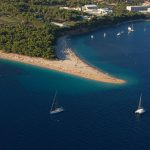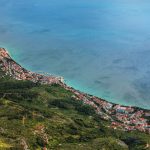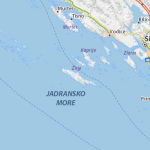November 28, 2018 — Croatia’s crystal-clear Adriatic Sea remains one of the country’s bigger selling points come tourism season, sending the nautical tourism sector into overdrive. But governmental oversight and hygienic controls have not grown in tandem, according to Slobodna Dalmacija, which begs the question:
How many tourists can empty their bowels into the Croatia’s Adriatic before it becomes a feculent cesspool?
Feces technically are classified as biodegradable waste which can be released into the open waters under certain conditions: 12 nautical miles from the nearest shoreline for boats without a purification system, or three nautical miles for those that have one, according to the MARPOL Convention
Burgeoning hotspots for nautical tourism, such as Makarska, have seen a boom in overnight stays among the well-heeled guests renting yachts of 50 meters or more, according to Harbor Manager Ivan Rašić. The nautical renaissance started when it installed a new breakwater. Since then, Rašić says the marina is nearly filled to capacity at least four days per week during the summer season — Wednesday and Thursday, as well as weekends.
The boom has seen the usual positive economic effects, with an increase in anchorage fees and residual spending by guests who disembark and start ambling along the shoreline.
Yet harder to quantify but also increasing is the amount of waste and noise created by the upsurge in guests. The characteristic “stains” and floating garbage visible in the port’s waters have become something of a public secret, according to the paper, along with its inadequate waste collection system.
The problems are myriad, and begin with a lackluster system which charges per disposal, as well as lagging oversight of every boat’s own waste control system. Every boat must have an oil book and garbage book chronicling its waste disposal schedule. The records are not inspected by the usual agency meant to oversea nautical activities, Port Authority. Instead, they fall under the auspices of the Ministry of Environmental Protection — which has little to no inspectors at smaller ports such as Makarska’s.
Not all vessels have septic tanks capable of retaining or refining waste water before releasing it into the sea. Tourists on charter cruises and smaller sailing boats with hand-crank pumps that send waste water directly into the sea have little recourse but to eliminate their feces into the water.
Smaller harbors such as Makarska’s don’t have the infrastructure to collect waste water off of vessels. Rašić depicts the system as a Pandora’s Box, which makes it very difficult to penalize offenders who may dump their septic tanks into the harbor’s waters, or too close to the shore.
Authorities’ hands are tied by a tight bureaucratic knot as well, even when skippers or boat owners release their poo into coastal waters. Evidence like video footage or photos — some of readily available — isn’t enough; samples must be taken from the offending vessel and compared to what was dumped into the sea. Mobile or fixed machines meant to collect waste and refuse exist, and are in use at larger marinas along the Adriatic but are a rare sight in smaller ports.
The resulting flotillas of feces and garbage have been known to migrate with the wind and current, often ending up on beaches — a familiar site to many who’ve been on the shore long enough.
Until the oversight and inspection system is fixed, little will change, according to Rašić. In the meantime, the Adriatic may see an increase in cloudy brown splotches interrupting its crystalline blue.
To read more about nautical tourism, check out our dedicated page.










